

Top Shade-Loving Plants for a Lush Garden Under Trees
Introduction
Gardening in shaded areas can feel like a puzzle. You have the majestic trees, but the shadow? It can be a tricky spot. Sure, we adore those leafy giants, but their shade can limit our plant options. However, don’t be discouraged! With the right shade-loving plants, you can turn those gloomy corners into lush, vibrant retreats.
Choosing the right plants is key. Think of them as your garden’s unsung heroes. They thrive where sun-soaking plants struggle. A garden under trees can be a sanctuary of texture, color, and life. This article will spotlight top shade-loving plants that flourish under trees, offering you inspiration for your own shady paradise.

The Importance of Shade-Loving Plants
Shade has its perks. For starters, cooler temperatures can help plants thrive in a more balanced environment. Shade also retains moisture, meaning less watering for you. Who wouldn’t want a bit more free time in their gardening routine?
Shade-loving plants play a vital role in maintaining biodiversity. They provide habitats for various wildlife. Birds, insects, and other critters find refuge among the foliage, creating a mini-ecosystem right in your backyard.
A well-planted shady area isn’t just functional; it’s visually appealing! Imagine the soft greens and vibrant blooms contrasting against the dark earth. A shady garden can serve as a peaceful retreat, enhancing your overall garden design. By incorporating these plants, you transform dull spaces into lush havens, proving that shade can be just as stunning as sun.
To make your shady sanctuary even better, consider adding gardening gloves to protect your hands while you dig in the dirt and create your garden masterpiece!
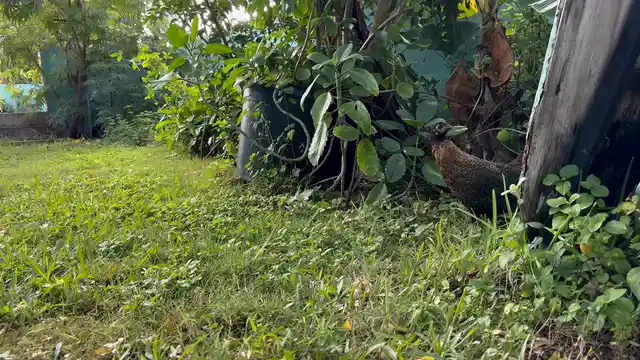
Types of Shade
Understanding Shade Conditions
Not all shade is created equal! Full shade means less than three hours of direct sunlight each day. It’s like your favorite cozy blanket—perfectly comfortable but lacking in brightness. On the other hand, partial shade requires three to six hours of sunlight, giving you more flexibility in plant selection.
Evaluating light conditions is essential. Take a moment to observe how the sun moves across your garden throughout the day. This will guide your plant choices. Are you in a dappled shade, or is it more like a cave?
Also, consider the USDA Plant Hardiness Zones. These zones help determine what plants can survive in your climate. By understanding your zone, you’ll avoid planting decisions that lead to disappointment. Make the most of your shady spots by selecting the right plants for the conditions you have.

Top Shade-Loving Plants
1. Ferns
Ferns are the ultimate shade-loving champions. They thrive where sunlight dares not tread. With their lush green fronds, ferns bring a jungle-like feel to any shady garden. Let’s spotlight some fabulous varieties:
– Maidenhair Fern: This delicate beauty has graceful, fan-shaped leaves. It loves dappled light but can handle full shade. Just keep the soil moist, and it’ll keep you swooning! You can find it easily, for example, check out this Maidenhair Fern Plant.
– Ostrich Fern: With its tall, feathery fronds, the ostrich fern stands proudly in shady spots. Its robust nature makes it a low-maintenance choice. Plus, it can grow quite large, creating a stunning backdrop. Want to add one to your garden? Click here to explore the Ostrich Fern Plant.
– Japanese Shield Fern: This fern is like the stylish cousin of the group. With its glossy, dark green leaves, it adds elegance to any shady nook. It’s also quite adaptable, thriving in various soil types. Find your own Japanese Shield Fern Plant and let it shine!
Ferns are not just low-maintenance; they also help retain moisture in the soil. Their deep roots allow them to compete with tree roots for nutrients, making them excellent companions for your shady garden.

2. Hostas
Hostas are the rock stars of shade gardens, boasting a wide range of foliage types and colors. From blues to greens and even golden hues, there’s a hosta for every taste. They are perfect for brightening up dark areas. Some key points about hostas:
– Variety: With countless cultivars, you can mix and match for added visual interest. Think about ‘Patriot’ for its striking white edges or ‘Blue Angel’ for its massive, lush leaves. You can find a wonderful Hosta Plant Collection to start your garden journey!
– Care: Hostas prefer rich, moist soil, but they are tough cookies. They can tolerate dry spells once established. Just don’t forget to mulch to retain moisture!
– Adaptability: Hostas do well in various soil conditions, making them ideal for those tricky spots under trees. They can even handle some morning sun, which promotes vibrant leaf colors.
With their beautiful foliage and low-maintenance requirements, hostas are a gardener’s best friend in the shade.
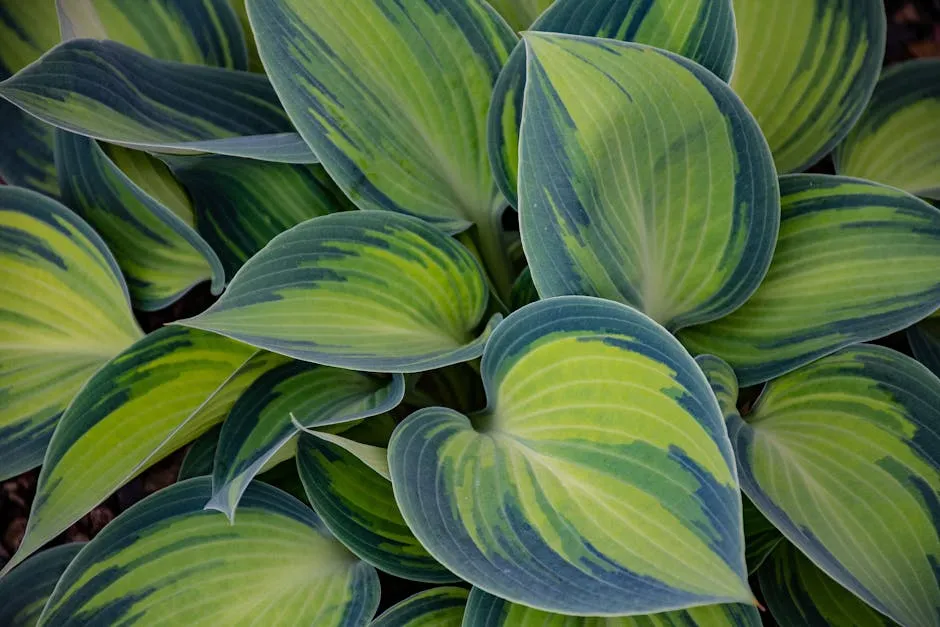
3. Dicentra (Bleeding Heart)
Dicentra, commonly known as bleeding heart, is a must-have for any shady garden. Its unique heart-shaped flowers dangle from arching stems, creating a whimsical effect. Here’s why you’ll love them:
– Aesthetics: The soft pink and white flowers bloom in spring, adding a charming touch to your garden. They are perfect for borders and containers. Want to add some magic? Check out this Bleeding Heart Plant (Dicentra).
– Care Tips: Bleeding hearts prefer well-drained soil and consistent moisture. In the summer heat, they may go dormant, so don’t panic! Just ensure they have enough water during their active growth in spring.
– Ideal Conditions: These beauties thrive in partial to full shade. They’re perfect for those spots where sunlight is just a distant memory.
Dicentra adds a touch of romance to your garden, making it feel like a secret garden oasis.
4. Coral Bells (Heuchera)
Coral bells, or Heuchera, are not just pretty faces. They boast colorful foliage that can brighten up any shady area. Here’s what makes them special:
– Variety: Available in an array of colors—deep purples, bright greens, and even fiery reds—coral bells can add a pop of color throughout the growing season. They also produce delicate flower spikes in spring.
– Versatility: Use them in borders, containers, or as a ground cover. Their low growth habit makes them perfect for layering with taller plants.
– Care: Coral bells prefer well-drained soil and can tolerate drought once established. They thrive in partial shade but can handle some sun too, giving you flexibility in garden design.
With their stunning foliage and adaptability, coral bells are a delightful addition to any shade-loving garden. Check out this Coral Bells Plant (Heuchera) to see the variety!
5. Astilbe
Astilbe is the drama queen of the shade garden. With feathery flower plumes and vibrant colors, it adds flair to shady spots. Here’s what to know about this showstopper:
– Fabulous Blooms: Astilbe produces fluffy flower spikes in shades of pink, white, and red, creating a stunning visual display. These blooms can last for weeks, attracting butterflies and bees.
– Soil Preferences: Astilbe thrives in moist, rich soil, making it perfect for areas that retain moisture. Just be sure to keep the soil damp, especially during dry spells.
– Light Requirements: This plant prefers partial shade. Too much sun can scorch its delicate leaves, while too little can diminish its blooms.
Astilbe’s lush plumes bring a burst of color and texture to your shady garden, ensuring it never feels dull or lifeless. If you’re interested, you can find it here: Astilbe Plant.

6. Vinca Minor (Periwinkle)
Vinca Minor, commonly known as periwinkle, is a fantastic choice for ground cover under trees. This hardy perennial thrives in partial to full shade, making it a perfect companion in shaded gardens. With its charming purple blooms, it adds a splash of color from mid-spring to early fall.
This plant is an evergreen, meaning it keeps its lush green foliage year-round. It forms a dense mat that suppresses weeds effectively. Say goodbye to those pesky invaders! Plus, its low-maintenance nature is a gardener’s dream. You won’t have to spend hours fussing over it. Just plant, water occasionally, and watch it flourish!
Vinca Minor is versatile, adapting well to various soil types. It prefers well-draining soil but can tolerate some drought once established. This makes it an excellent choice for those tricky spots under trees, where water might be limited. With its delightful flowers and evergreen leaves, periwinkle ensures your shady spots look lively all year long. Want to give it a try? Here’s a link to a great Vinca Minor (Periwinkle) Plant.

7. Mahonia
Meet Mahonia aquifolium, also known as Oregon grape holly. This shade-loving shrub is a showstopper, boasting glossy, dark green leaves that provide a striking contrast in darker areas of your garden. Its foliage isn’t just pretty; it’s also fragrant! In spring, clusters of bright yellow flowers bloom, attracting pollinators and brightening the shade.
Mahonia is an evergreen, meaning it offers year-round visual interest. Those vibrant leaves remain lush, even in winter, keeping your garden lively when many plants are asleep. The plant also produces dark blue berries in late summer, adding another layer of interest.
This shrub thrives in partial to full shade and prefers moist, well-drained soil. It can tolerate some drought once established, making it relatively low-maintenance. If you’re looking to brighten up those gloomy spots under your trees, Mahonia is the perfect choice. With its stunning foliage and delightful flowers, it transforms dull areas into vibrant garden highlights. Check out this Mahonia Aquifolium Plant for your garden!

8. Ground Covers (e.g., Lamium, Ajuga)
When it comes to ground covers for shady spots, Lamium and Ajuga are among the best. These low-growing plants create lush carpets that suppress weeds and beautify your garden. Lamium, or dead nettle, features attractive foliage with silvery markings and blooms in shades of pink and white. It thrives in dappled to full shade, making it ideal for areas with limited sunlight.
Ajuga, or bugleweed, is another fantastic option. Its colorful foliage can be green, bronze, or variegated, adding drama to your garden. In spring, Ajuga produces spikes of blue flowers that attract pollinators, enhancing the overall appeal. Both plants are hardy and can tolerate various soil types, ensuring they thrive in challenging conditions beneath trees.
These ground covers grow quickly, filling in bare spots and creating visual interest with their flowers and foliage. They require minimal maintenance and are drought-tolerant once established. If you want to create a stunning shaded area while keeping weeds at bay, Lamium and Ajuga are excellent choices. You can find some beautiful Lamium Plants and Ajuga Plants to enhance your garden!
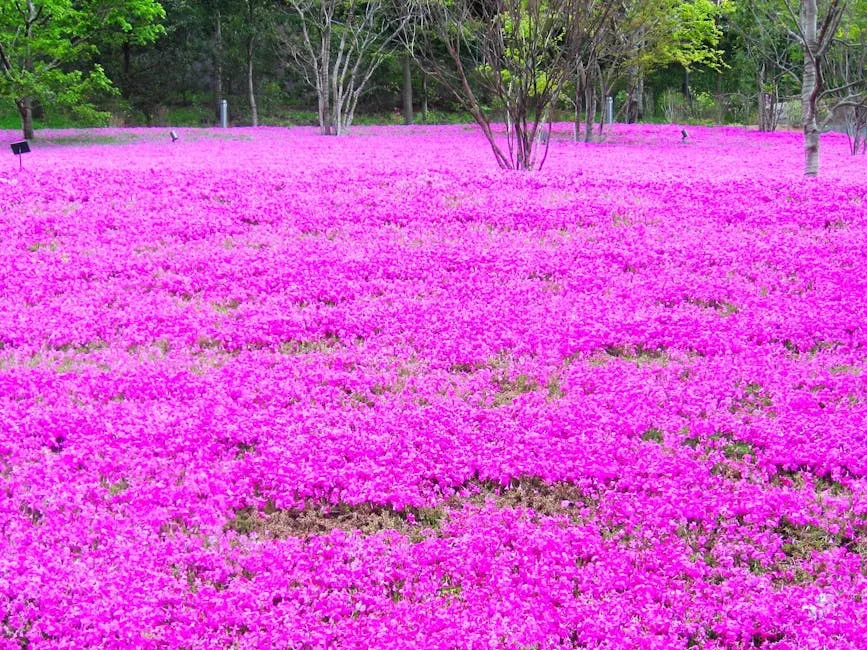
9. Flowering Shrubs (e.g., Hydrangeas, Azaleas)
Flowering shrubs make a beautiful addition to any shady garden, and Hydrangeas and Azaleas are top contenders. Hydrangeas are known for their stunning blooms that come in various colors, including blue, pink, and white. They thrive in partial shade, requiring some sunlight to ensure vibrant flowers.
Caring for Hydrangeas is relatively straightforward. They prefer well-drained, moist soil and benefit from regular watering. Mulching helps retain moisture and keeps the roots cool. With their large, luscious blooms, Hydrangeas can transform your shady spots into vibrant focal points. You can find quality Hydrangea Plants that fit your style!
Azaleas, on the other hand, bring a burst of color in spring. With their delicate flowers, they add charm to shady corners. These shrubs prefer acidic soil and can handle partial shade well. Like Hydrangeas, regular watering and mulching are essential for their health. With a variety of colors and sizes available, Azaleas can fit into any garden design. Explore beautiful Azalea Plants that will make your garden pop!
Both Hydrangeas and Azaleas provide seasonal beauty and can be enjoyed for years. Their ability to thrive in shaded areas ensures that your garden remains colorful and inviting, even in less sunny spots.
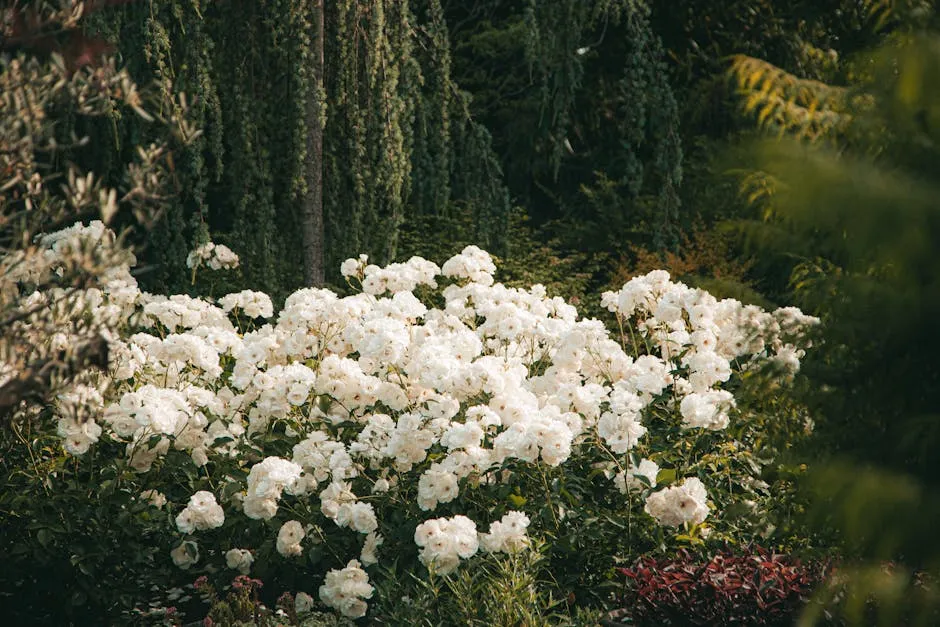
10. Seasonal Bulbs (e.g., Snowdrops, Wood Anemones)
Don’t underestimate the charm of seasonal bulbs that thrive in shade! Snowdrops and Wood Anemones are excellent choices that add early blooms to your garden. Snowdrops are among the first flowers to emerge in spring, often pushing through the snow. Their delicate white petals create a stunning contrast against the winter landscape, signaling that warmer days are ahead.
Plant Snowdrops in clusters for a more dramatic effect. They prefer well-drained, moist soil and can naturalize easily, spreading over time. Once established, they require minimal care, making them a delightful addition to any shady garden. Want to add these beauties? Check out the Snowdrop Bulbs available online!
Wood Anemones, with their charming white or purple flowers, also thrive in dappled shade. These perennials spread beautifully, creating a carpet of blooms in early spring. They prefer rich, well-drained soil and can tolerate varying moisture levels. If you’re intrigued, check out these lovely Wood Anemone Bulbs to enhance your garden’s beauty!
Both bulbs add a touch of magic to your shaded areas, heralding the arrival of spring. With their early blooms and ability to naturalize, Snowdrops and Wood Anemones ensure that your garden remains lively and colorful, even in the shade.
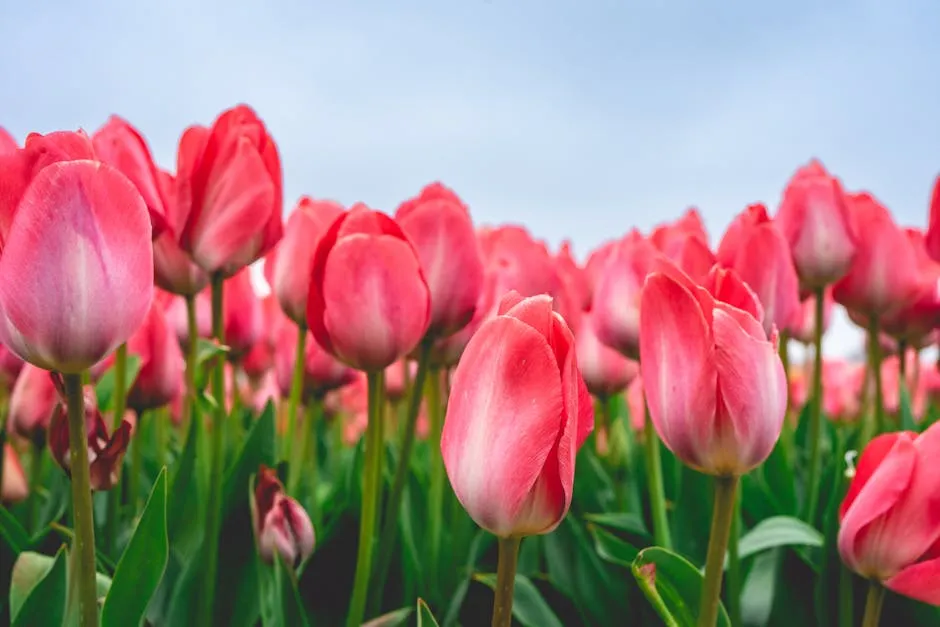
Care Tips for Shade Gardens
Creating a thriving shade garden requires some strategic planning. First off, start with soil preparation. Shade gardens often have compacted soil, especially under trees. Loosen the soil to promote drainage and root development. Mixing in organic matter, like organic compost, can enrich the soil, providing nutrients that shade-loving plants crave.
When it comes to watering, consistency is key. While shaded areas retain moisture better, they can still dry out, especially during hot spells. Water plants thoroughly but don’t overdo it—too much moisture can lead to root rot. A good rule of thumb is to check the soil an inch down. If it’s dry, it’s time for a drink!
Mulching is your best friend in a shade garden. A thick layer of mulch—about 2 to 4 inches—helps retain moisture, suppress weeds, and keep the soil temperature stable. Organic mulches, like bark or straw mulch, also break down over time, adding nutrients back into the soil.
Fertilizing shade-loving plants is important too. Use a slow-release fertilizer in spring to support growth throughout the growing season. Avoid high-nitrogen fertilizers, as they can lead to leafy growth at the expense of flowers. A balanced formula will do wonders for those colorful blooms.
Be mindful when planting under trees. Tree roots can be quite invasive. To prevent root damage, establish a planting strategy. Choose spots where the tree’s roots are less dense, like gaps or areas with less competition. This allows your plants to thrive without competing for nutrients and water.
Seasonal care is also essential. Regular pruning helps maintain the shape of your plants and encourages healthy growth. Deadheading spent flowers promotes new blooms, keeping your garden vibrant. Don’t forget to check for any signs of pests or diseases, especially during warm months. You might want to keep a handy pest control spray nearby!
With these care tips, your shade garden can flourish, transforming those dark, neglected areas into a lively, lush atmosphere.
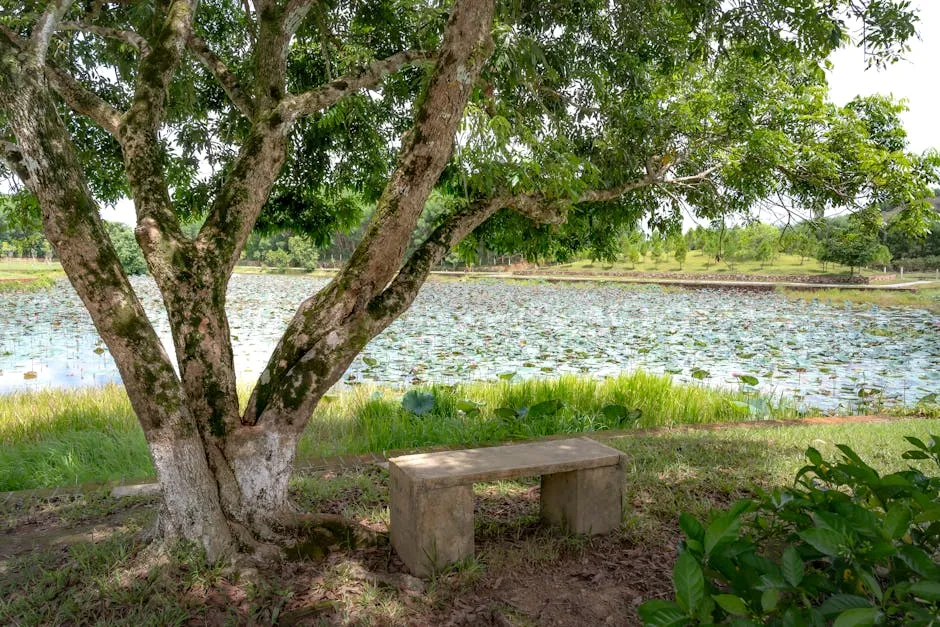
Conclusion
Creating a lush garden under trees with shade-loving plants is a rewarding endeavor. Not only do these plants thrive in low-light conditions, but they also bring a sense of serenity and beauty to your outdoor space. Imagine stepping into a vibrant oasis filled with various textures and colors, all while enjoying the cool shade on a hot day.
Encouraging biodiversity is another fantastic benefit. A well-planned shade garden supports various wildlife, from birds to beneficial insects. By incorporating a mix of plants, you create a mini-ecosystem that enhances the health of your garden.
Don’t hesitate to experiment with different combinations of plants. Mixing shapes, colors, and heights can add visual interest and depth to your garden. Remember, shade doesn’t mean dullness! With the right selection, you can create a vibrant and inviting space that transforms those tricky shaded areas into a thriving garden sanctuary. So grab your gardening apron, and let your creativity flourish!

FAQs
What are the best plants for full shade?
Finding the right plants for full shade can be a game changer. Here are some top contenders: – **Ferns**: These lush perennials thrive in low-light areas. Maidenhair and Ostrich ferns are popular choices. They add texture and greenery with minimal upkeep. – **Hostas**: With their vibrant foliage, hostas brighten up dark spots. They come in various colors and sizes, making them versatile. – **Bleeding Heart (Dicentra)**: This plant boasts unique heart-shaped flowers. It thrives in full shade and adds a charming touch to any garden. – **Coral Bells (Heuchera)**: Known for colorful leaves, coral bells thrive in shaded areas. They also produce lovely flower spikes, attracting pollinators. – **Astilbe**: With feathery blooms, astilbe adds drama to shady corners. It loves moist soil and can bring bursts of color in spring and summer. These plants help create a vibrant, inviting atmosphere even in the shadiest spots.
How do I plant under a tree without harming its roots?
Planting under trees requires some finesse. Here are tips to minimize root disturbance: – **Select Wisely**: Choose shallow-rooted plants. Avoid deep-rooted options that may compete with the tree. – **Identify Gaps**: Look for areas with minimal root presence. This could be spots with existing plants or more open soil. – **Use Plug Plants**: Start small with plug plants or bulbs. This reduces the amount of soil disturbance. – **Watering**: Ensure new plants receive adequate moisture. Tree roots will compete for water, so consistent watering is key. – **Mulch Carefully**: Apply mulch, but keep it away from the tree trunk. This protects both the tree and new plants from moisture issues. Following these tips can help you create a thriving garden without harming your tree.
Can I grow vegetables in shaded areas?
Yes, you can grow vegetables in partially shaded spots! Some vegetables tolerate shade better than others. Here are a few options: – **Lettuce**: This leafy green prefers cooler temperatures, making it ideal for shaded areas. It can grow well with just a few hours of sunlight. – **Spinach**: Similar to lettuce, spinach thrives in cooler conditions. It’s perfect for spring and fall gardens in shaded spots. – **Radishes**: These fast-growing veggies can handle some shade. Just ensure they have enough light to develop their flavor. – **Herbs**: Many herbs like parsley and mint can thrive in partial shade, adding flavor to your dishes without requiring full sun. When planting veggies in shaded areas, ensure the soil is rich and well-draining. With the right care, you can have a productive shaded vegetable garden.
How do I maintain a shade garden?
Maintaining a shade garden involves a few straightforward practices: – **Regular Watering**: Shade gardens can dry out, especially in hot weather. Water consistently, especially during dry spells. – **Mulch**: Apply a layer of mulch to retain moisture and suppress weeds. Organic mulches break down over time, enriching the soil. – **Prune**: Keep plants tidy by pruning dead or overgrown branches. This encourages healthy growth and improves air circulation. – **Fertilize**: Use a slow-release fertilizer in spring. This provides nutrients throughout the growing season without overwhelming the plants. – **Monitor Pests**: Check for pests regularly. Address any issues promptly to keep your shade plants healthy. With these maintenance tips, your shade garden can thrive beautifully, adding charm to your outdoor space.
What are the signs of overwatering in shade-loving plants?
Overwatering can be detrimental to shade-loving plants. Here are common symptoms to watch for: – **Yellowing Leaves**: If leaves turn yellow and drop, this may indicate too much water. Healthy plants should have vibrant, green foliage. – **Wilting**: Although it sounds counterintuitive, overwatered plants can wilt. This happens when roots suffocate and can’t absorb nutrients. – **Mushy Roots**: If you notice a rotten smell when checking the roots, it’s a sign of root rot. Healthy roots should be firm and white. – **Leaf Spots**: Fungal diseases can thrive in overly moist conditions, leading to unsightly leaf spots. – **Stunted Growth**: Plants that are overwatered may grow slowly or stop altogether. They struggle to thrive in consistently wet soil. To avoid overwatering, check the soil moisture before watering. A simple finger test can help determine if your plants need a drink.
Please let us know what you think about our content by leaving a comment down below!
Thank you for reading till here 🙂
All images from Pexels



